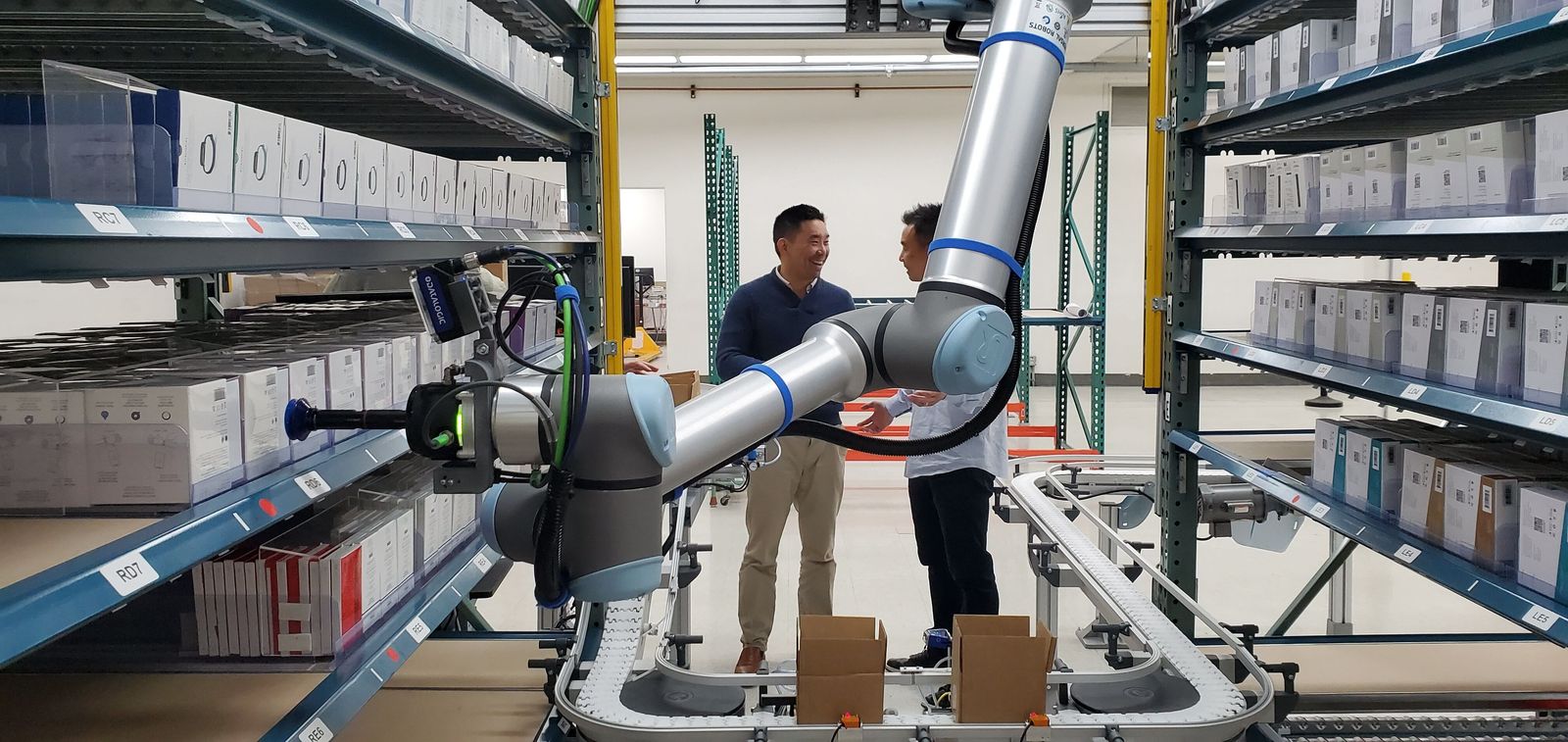AI Set to Supercharge Robotic Automation
Universal Robots Offers Four Predictions for 2024
We’ve reached that point in the year when it’s time to reflect upon the trends from the past 12 months, while looking ahead at what 2024 has in store for the world of robotics and automation.
2023 was an exciting year for innovation. The emergence of artificial intelligence (AI) technologies, such as generative AI, captured global attention and dominated headlines. However, the adoption of generative AI for businesses is still very much in its early stages and questions around how best to harness this technology remain at the forefront of many minds.
Digital transformation is an ongoing process so we can expect to see this year's breakthrough trends continuing to shape society into next year. But how will these trends impact robotics and automation and what can the manufacturing industry expect to see next year?
 DCL Logistics in California deployed Universal Robots’ UR10e cobot and realized a 500 percent efficiency increase, 50 percent labor savings, a three months ROI, and 100 percent order accuracy.
DCL Logistics in California deployed Universal Robots’ UR10e cobot and realized a 500 percent efficiency increase, 50 percent labor savings, a three months ROI, and 100 percent order accuracy.
AI will set a new pace of development in robotics and automation
AI is transforming the world of software development, making it cheaper, faster, and more effective. Software is a key component of automation, and with AI, software developers will be able to create more customized and optimized solutions for various tasks and challenges. If software development has sometimes felt like digging with a shovel, the introduction of AI is like bringing two horses and a plough to the process. However, automation expertise will remain a scarce and valuable resource in the process of AI revolutionizing manufacturing.
It has been interesting and perhaps surprising to see AI changing the lives of office workers before it touches working practices in most factories. I look forward to seeing the benefits of machine learning reach more manufacturers in 2024. After all, the technology is already there – we have many partners developing applications using AI to allow our robots to perform more complex and diverse functions. For example, AI allows robots to have human-like perception, handle variation, move parts precisely, adapt to changing environments, and learn from their own experience. With time, these capabilities will lead to unprecedented flexibility, quality and reliability in manufacturing.






